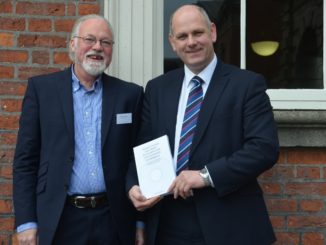
[dropcap]Young[/dropcap] women are more likely to have a third-level qualification than young men, new figures show.
A recent report by the Central Statistics Office (CSO) has shown a major gap in attending third level education between genders in their 20s and early 30s. The report showed that females were less likely to be classified as early school leavers and were more likely to have a third level qualification.
Around 60 per cent of females aged 30-34 had a third level qualification compared to just 46 per cent of males. Similarly only 24 per cent of males aged between 20-24 had a qualification compared to 33 per cent of females. Older age groups showed little difference such as those in their 50s and 60s.
Education experts say the gender gap among younger age groups is due to the boom-time trend of young males leaving school early to join the manual workforce. The early school leavers’ rate among 18-24 year-olds was 5 per cent in Ireland in 2017.
However, the report found that those with a primary/no formal education were over four times more likely to be unemployed (14 per cent) when compare to those with a third level qualification (3 per cent).
The early school leaver rate in Ireland has improved. Ireland was ranked seventh lowest in the EU on this indicator in 2016, compared to sixteenth lowest in 2009.
Despite females being more likely to earn a third level qualification, women were less likely to be employed compared to males. Although this gap does narrow as the level of education increases.
Isha McDonnell, Chairperson of DCU Feminism Society commented on the report saying: “I think women generally don’t see apprenticeships, whether that’s construction, carpentry, plumbing etc., as being open to them so they are inclined towards disciplines that more-or-less require a third level degree. This likely contributes to why there’s such a high proportion of women in areas like nursing and social care.”
In DCU, the 2012 Diversity Report found that female undergraduates made up 51-54 per cent of the student body between 2007 and 2012 with schools of Science and Health having the most female students (between 63-69 per cent).
This is driven largely by the large numbers of female undergraduate students studying within the school of nursing. Should these students be excluded from the analysis, the percentage of female students within the faculty falls from 63 per cent to 53 per cent.
The most striking gender gap was in the School of Engineering and Computing which had a female student body of 16 per cent maximum between 2007 and 2012 compare to 84 per cent of male students.
According to the diversity report, the number of male students has increased marginally since 2007/08 which they said is due to a decline in the number of female students entering nursing programmes in the university and a rise in male students in a number of faculty Schools’, particularly education.
Female students are also 10 per cent more likely to finish their degree then their male peers.
VP for Welfare and Equality, Podge Henry said: “I think it is great. It’s statistics and stories like these that prove the equality of genders and that males are no better than females. As a whole, it is also great to see Ireland as a country being so well educated. Third level education is becoming the ‘normal thing’ now. And having such a well educated population draws big companies like Facebook to this country providing more employment.”
The DCU Equality and Diversity statement says that “DCU shall positively promote diversity and equality of opportunity. DCU shall respond to the needs of our students and employees irrespective of gender, family status, marital status, sexual orientation, age, religion, disability, membership of the traveller community or race.”
Callum Lavery
Image Credit: Stock Photos


